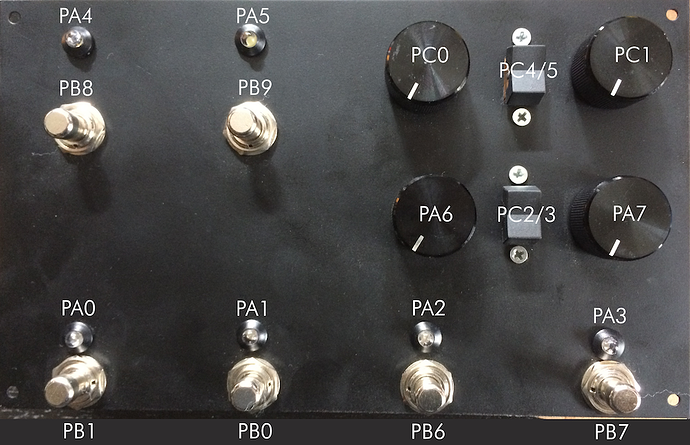Hi there!
Weeks ago I built my Axoloti in an universal enclosure for use it in several different situations. As synth, guitar fx, midi controller, etc.
See the picture attached.
Today I was in need to use an expression pedal, but since every gpio pin is soldered and occupied, I was thinking about misusing the audio in / out in some way.
I tried sending different waveforms out of the audio out through the pedal back into audio in and then try to convert it in k-rate signals to produce any usable data for midi cc. Of course I failed 
I have no idea how to solve this in the Axoloti patcher (except desolder anything to solder on a TRS jack)
Does someone have an idea?
Thanks for reading!


